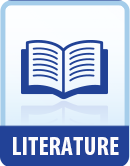|
This section contains 286 words (approx. 1 page at 400 words per page) |

|
The River Merchant's Wife: A Letter Summary & Study Guide Description
The River Merchant's Wife: A Letter Summary & Study Guide includes comprehensive information and analysis to help you understand the book. This study guide contains the following sections:
This detailed literature summary also contains Bibliography on The River Merchant's Wife: A Letter by Ezra Pound.
" The River-Merchant's Wife: A Letter" was published in 1915 in Ezra Pound's third collection of poetry, Cathay: Translations, which contains versions of Chinese poems composed from the sixteen notebooks of Ernest Fenollosa, a scholar of Chinese literature. Pound called the poems in English which resulted from the Fenollosa manuscripts "translations," but as such they are held in contempt by most scholars of Chinese language and literature. However, they have been acclaimed as "poetry" for their clarity and elegance. They are variously referred to as "translations," "interpretations," "paraphrases," and "adaptations."
Pound's study of the Fenollosa manuscripts led to his preoccupation with the Chinese ideogram (a written symbol for an idea or object) as a medium for poetry. In fact, he realized that Chinese poets had long been aware of the image as the fundamental principle for poetic composition that he himself was beginning to formulate. Pound further maintained that the poetic image did not lose anything in translation between languages nor was it bound by time, but effectively communicated through time and across cultures, accruing meaning in the process. " The River-Merchant's Wife: A Letter," for example, communicates with depth and poignance the human experience of sorrow at separation, the human experience of love.
Working with the literary traditions of other cultures was typical not only of Pound, but of most of his contemporaries, who were not convinced that the only culture of value was European. However Pound's work has significance not only for its cross-cultural innovations, but for the "cross-chronological" breakthrough notion that the human response to the world links us all, so that an American in the twentieth century can share and learn from the human experience of an eighth century Chinese river-merchant's wife.
Read more from the Study Guide
|
This section contains 286 words (approx. 1 page at 400 words per page) |

|



